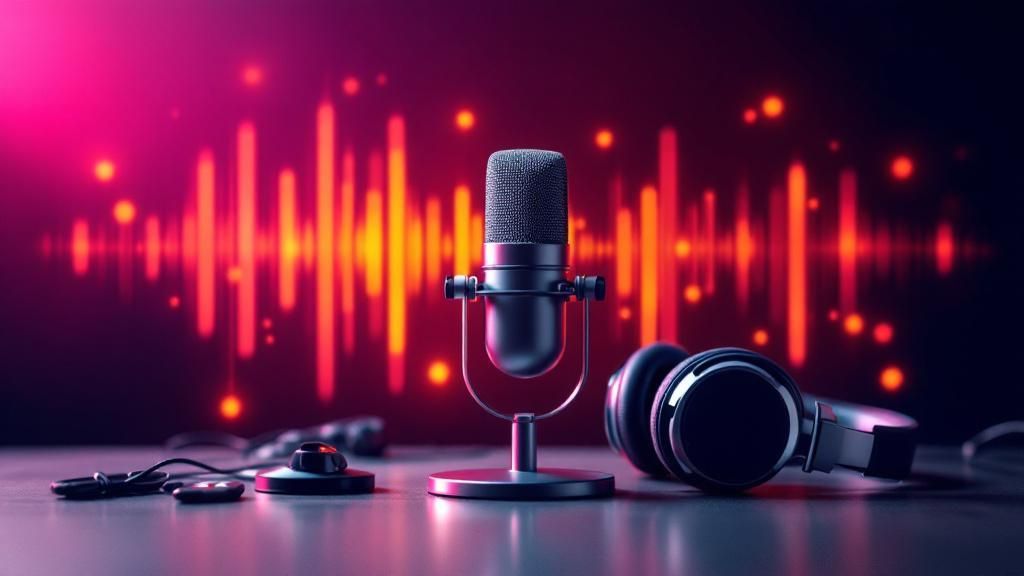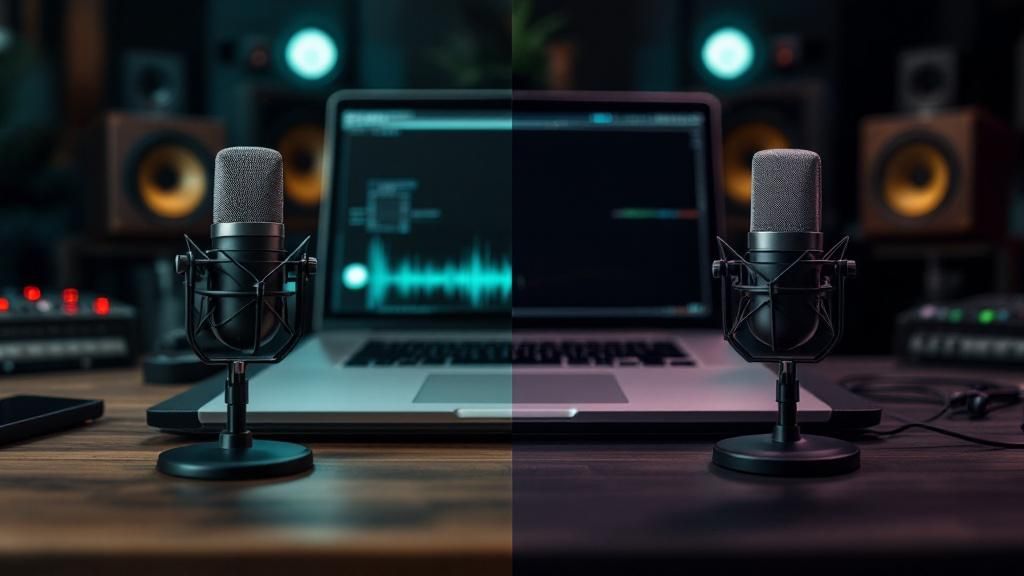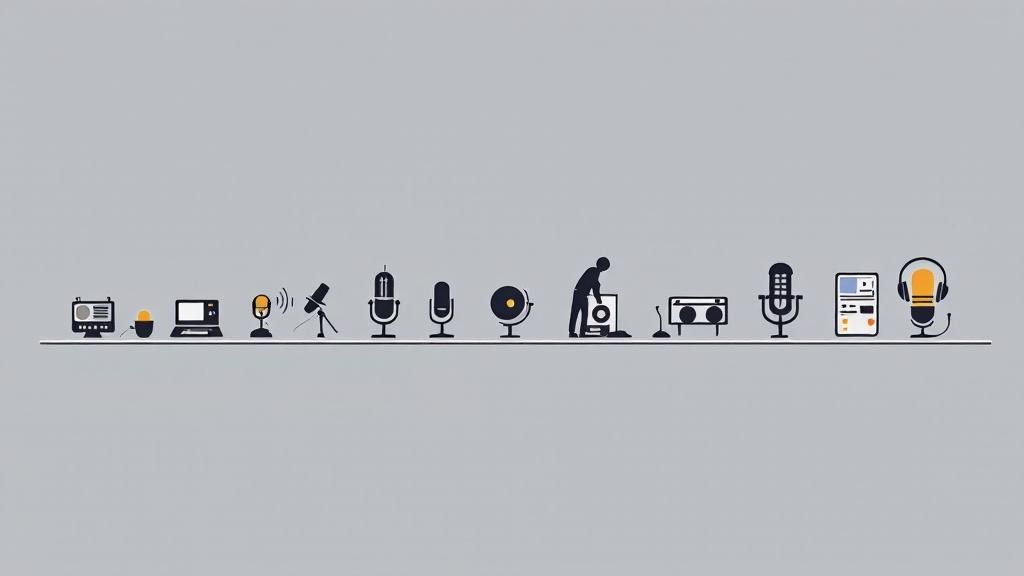
Enhancing Podcasts with Superior Sound Design
Sound design in podcasting plays a pivotal role in crafting an engaging auditory experience. By incorporating audio elements such as music tracks and sound effects, you can evoke emotions and enhance the overall listening journey. This aspect of post-production demands not only practice but also a deep understanding of your audience’s preferences and the content they cherish. In narrative podcast production, the strategic use of music and sound effects is crucial for highlighting transitions, capturing attention, and introducing recurring segments. These elements should enrich the storytelling’s emotional texture without overshadowing it. For those seeking quick improvements in podcast audio quality, tools like CS Design Studios can be utilized to enhance speaker voices and remove unwanted audio artifacts. This AI-powered solution helps maintain focus on the content by eliminating distractions such as reverb and echo.

Impact of Sound Design on Podcast Engagement
Sound design is a pivotal element in the realm of podcasting, significantly enhancing listener engagement. By integrating sound effects, music, and various audio elements, podcasters can transform a simple narrative into an immersive experience. This meticulous attention to audio detail not only enriches storytelling but also captivates audiences, encouraging them to return for more episodes. As the podcast industry growth, with projections indicating a listener base of 584 million by 2025, the sound design’s significance becomes increasingly evident.
Comparing sound design to video content preference, it is clear that both play essential roles in audience engagement. While 32% of podcast users in the United States prefer podcasts with video content, sound design remains a fundamental aspect of audio storytelling. The ability to create vivid mental images through sound alone is a unique advantage of audio-only podcasts, making them a compelling choice for many listeners. This comparative analysis highlights the distinct yet complementary roles of sound and video in enhancing podcast experiences.
For those looking to enhance their podcast’s appeal, considering the services of a podcast production agency or podcast recording services, such as CS Design Studios’ can be beneficial. These services can help podcasters Outsource Podcast Production, ensuring high-quality sound design that captures and retains listener interest. As podcast consumption rise, investing in professional sound design can be a strategic move to stand out in the increasingly competitive podcast landscape.

Sound Design Versus Raw Audio in Podcasts
Sound design plays a pivotal role in transforming raw audio into an engaging podcast experience. While raw audio captures the essence of a conversation, it often lacks the polish and clarity that listeners expect. According to recent studies, enhancing audio quality through sound design significantly improves listener retention and satisfaction. This process involves balancing, equalizing, and adding effects to create a more immersive auditory experience.
The decision between DIY and professional podcast production can influence the quality of sound design. DIY vs professional podcast production allows for creative control and can be more cost-effective, but it often requires a steep learning curve. In contrast, a Podcast Production Agency provides expertise and high-quality results, ensuring that sound design is executed with precision. This choice ultimately depends on your budget, needs, and desired quality.
Outsourcing podcast production can be beneficial for those seeking professional sound design without the hassle of learning complex audio editing techniques. Podcast recording services offer the tools and expertise needed to enhance audio quality, making your podcast stand out. By understanding the importance of sound design, you can ensure your podcast delivers a captivating and professional listening experience.

Evolution of Sound Design in Podcasting
The evolution of sound design in podcasting reflects a dynamic trend toward increasingly sophisticated audio experiences. From the early days of radio, where broadcasters utilized sound effects and music to enhance narratives, the art of audio storytelling initiative has significantly advanced. Today, the Audio Podcast Alliance is at the forefront of this movement, aiming to enhance the reach and quality of audio storytelling initiative. This initiative seeks to integrate more engaging audio narratives into the community, showcasing the potential of audio as a medium for storytelling and cultural exchange.
The current state of sound design in impact of podcasts shows a trend toward more immersive and engaging audio experiences. Sound designers play a pivotal role in this evolution, crafting auditory landscapes that captivate listeners. Their contributions to popular podcasts and collaborations with renowned artists underscore the importance of sound design in enhancing the auditory experience. As the demand for high-quality audio content grows, podcast production agencies and podcast recording services are increasingly sought after to meet these expectations.
The history of audio storytelling initiative and the evolution of samplers in music production have paved the way for modern podcasting techniques. The introduction of the Mellotron in 1963 marked a significant milestone, revolutionizing how music and sound are created. This innovation allowed artists to incorporate diverse sounds and effects into their compositions, a practice that continues to influence podcast production today. As the industry evolves, many creators choose to outsource podcast production to ensure professional-quality sound design, further elevating the listener’s experience.

Scientific Insights into Podcast Sound Design
Sound design plays a pivotal role in podcast production agency, serving as a crucial element in multimedia storytelling. By incorporating various audio elements such as sound effects and music, sound design enhances the narrative, creating an immersive experience for listeners. This approach not only enriches storytelling but also engages the audience more deeply, making the content more memorable and impactful. As a result, many podcasters seek professional podcast recording services to ensure high-quality sound design.
In the realm of podcasting, cardioid microphones for podcasts are often the preferred choice due to their directional pickup patterns. These microphones focus on capturing sound from a specific direction while minimizing background noise, making them ideal for podcasting environments where clarity and focus on the speaker’s voice are paramount. This ensures a cleaner and more professional audio quality, which is essential for engaging listeners effectively.
Mixing podcast audio involves a blend of artistic and scientific elements. It requires a balance between technical knowledge and auditory judgment to achieve a sound that is both pleasing and clear to the listener. Understanding technical aspects like decibels and ohms is important, but the ultimate goal is to enhance the raw audio, making it polished and suitable for various listening environments. Many podcasters choose to outsource podcast production agency to achieve this level of quality.
Looking ahead, the importance of sound design in podcasts is expected to evolve with advancements in technology and listener preferences. The LUFS standard, which measures the average perceived loudness of a podcast, plays a key role in maintaining a consistent listening experience across episodes. By adhering to this standard, podcasters can avoid unnatural sound levels and enhance overall audio quality, ensuring a more enjoyable experience for their audience.



